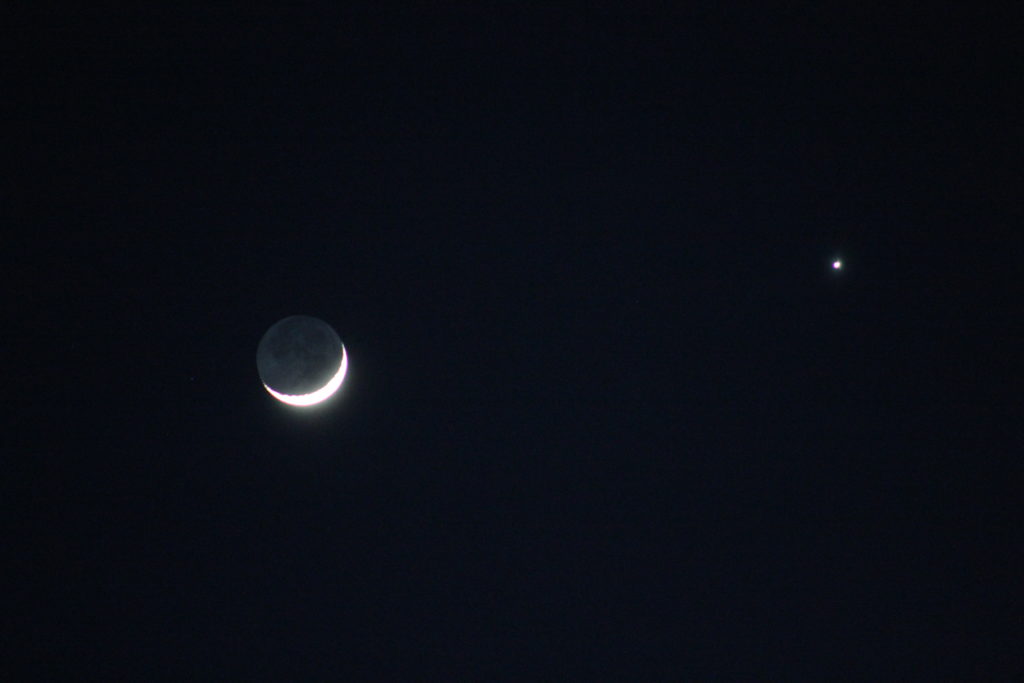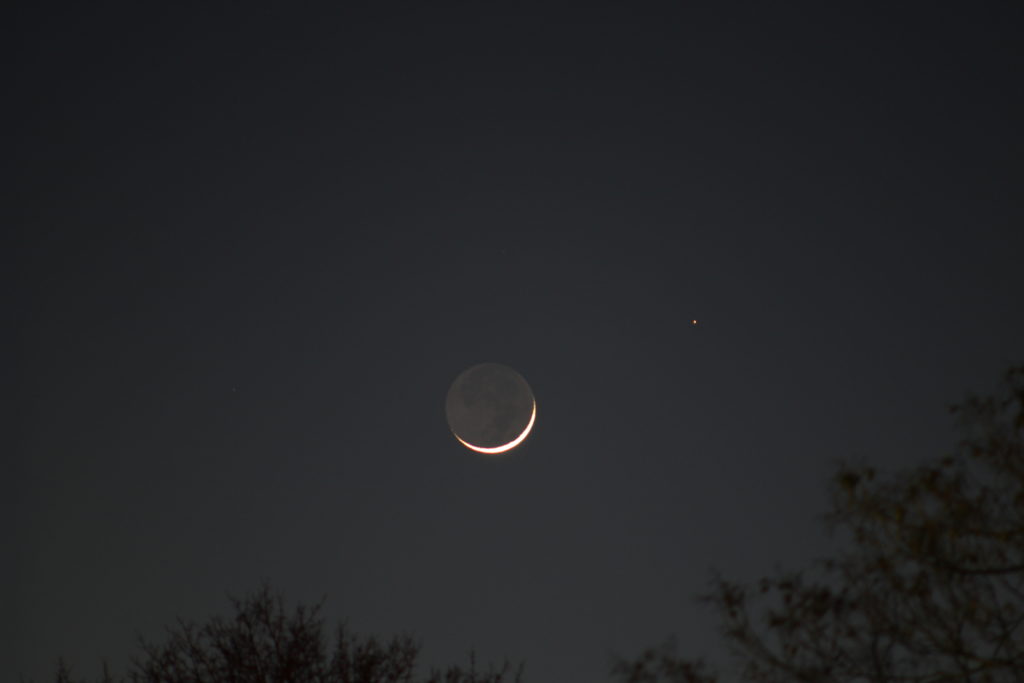Yesterday I posted some of my own photos of the Moon and Mars in conjunction from the night before. Last night I went out again knowing that there was another planetary conjunction in the works. The Moon was now with Venus. People on the internet and in person were asking me “Mars? I thought the Moon was near Venus,” and “Venus? I thought the Moon was near Mars.” It really speaks to the fact that most people don’t realize how quickly the sky changes from the point of view of an Earthbound observer. So what happened between the Mars-Moon and Venus-Moon conjunctions?


There are a few noticeable differences in the pictures above. The first is that Venus is much brighter than Mars. Venus has an apparent magnitude of -4, while Mars is at +1.3. This difference of 5 magnitudes literally means that Venus is 100,000 times brighter in the sky than Mars. It doesn’t look that way in pictures because I have changed the ISO and exposure time to meet the needs of the environment, but in the sky it’s pretty obvious how much brighter Venus is.
The second thing is that the Moon is brighter, and more of it is bright. The first evening showed the thinnest lunar crescent, while the second it was much brighter and more apparent. The Moon orbits the Earth in 29.5 days, moving the full 360 degrees around the Earth, so doing the math gives us roughly 12 degrees of movement through the sky if viewed at the same time each day. This is a back of hand estimate, and I’m ignoring a few important effects for a simple calculation. For reference, if you want to use your hand to figure out how much movement this translates to, make the following hand motions with your arm extended.

As the Moon moves further around the Earth, it’s angle between the Earth and Sun increases, reflecting more of the sun’s light toward the Earth and increasing the amount of Moon illuminated by the Sun.
The third thing to notice about this picture is a bit of an observational quality. The Moon and Venus shot has a reddish tinge to the brightest parts. The temperature was much lower during the Venus shot than it was during the Mars shot, and I didn’t want to spend much time outside in the cold, so my camera lens didn’t have time to adapt to the cold. The result is what we call Chromatic Aberration. The warm lens in the cold air probably fogged up just a little bit, causing different wavelengths of light in the image to focus slightly differently. The effect wasn’t very noticeable because of the airtight and compact camera lens.
If you wanted to see either of these conjunctions, you missed them sadly. The Moon moves across the sky much faster than the planets since it is so close to us. The planets do move against the background of stars, as they are much closer than the distant twinkling lights, but the motion can take a few nights to notice. Eventually as the moon gets closer to full, about a week from now, it will find it’s way closer to the third visible planet in our skies after sunset, the bright massive planet Jupiter. I’ll see if I can snap some pics next week.
Even though the sky changes quickly as the Moon orbits the Earth and the planets orbit the Sun, one thing that doesn’t change is how people will always come up and ask me what I’m looking at if I’m doing any kind of observing. That curiosity is present in us all.
